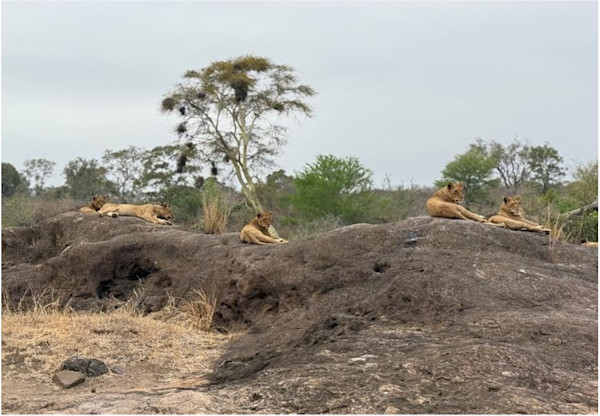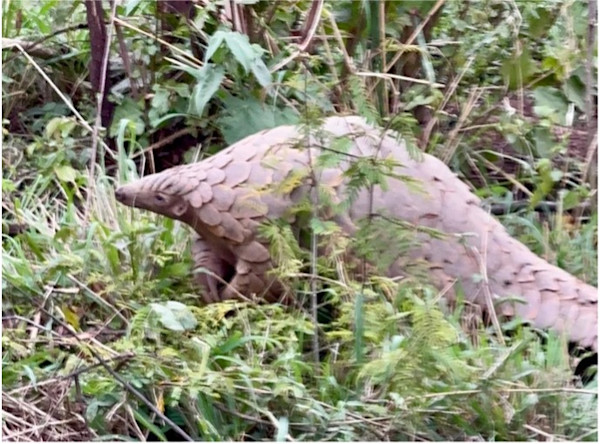March 2025
Biodiversity
The leopard tortoise in summer and winter
in BiodiversityShare:
The leopard tortoise in summer and winter

The leopard tortoise (Stigmochelys pardalis), one of the most striking and recognizable tortoise species, is a fascinating reptile native to the savannas, grasslands, and semi-arid regions of eastern and southern Africa. Named for its distinctive yellow-and-black spotted shell, which resembles the coat of a leopard, this species is well-adapted to a variety of environmental conditions. However, its behaviour, diet, and overall lifestyle undergo notable changes between the warm, vibrant summers and the cooler, dormant winters. Understanding how the leopard tortoise navigates these seasonal shifts offers a glimpse into its resilience and adaptability.
Summer: A Season of Activity and Abundance
Summer in the leopard tortoise’s natural habitat typically brings warm temperatures, often ranging between 24°C to 35°C, accompanied by seasonal rains in many regions. This is a time of plenty for the tortoise, as the landscape transforms into a lush expanse of grasses, succulents, and flowering plants—its primary food sources. The leopard tortoise is a strict herbivore, favouring a diet of mixed grasses, thistles, and even the occasional prickly pear cactus. During the summer months, it takes full advantage of this abundance, grazing actively to build up energy reserves.
The warmth of summer also fuels the tortoise’s metabolism, making it more active than at any other time of year. Leopard tortoises are diurnal, meaning they are awake and mobile during the day. In summer, they can often be seen basking in the early morning sun to regulate their body temperature before setting out to forage. Unlike some other tortoise species, the leopard tortoise does not dig burrows for shelter. Instead, it seeks shade under bushes or rocky outcrops during the hottest parts of the day to avoid overheating. This behaviour highlights its ability to balance activity with thermoregulation, a critical skill in the sun-soaked African summers.
For wild populations, summer is also a key time for reproduction. Female leopard tortoises lay clutches of 5 to 30 eggs, depending on their size and health, often digging shallow nests in sandy soil. The warm temperatures and occasional rains create ideal conditions for egg incubation, which typically lasts 8 to 12 months. Hatchlings often emerge in late summer or early autumn, ready to take advantage of the lingering abundance. In captivity, summer-like conditions can prompt similar reproductive behaviour, though timing may vary.
Winter: A time of rest and resilience
In contrast to the lively summers, winter in the leopard tortoise’s habitat is a season of scarcity and stillness. From May to August in the Southern Hemisphere, temperatures can drop significantly, sometimes dipping below 10°C at night, while rainfall becomes sparse. The lush greenery of summer fades, leaving behind dry grasses and limited food sources. For the leopard tortoise, this shift triggers a dramatic change in behaviour: it enters a state of brumation, a reptile equivalent of hibernation, though less extreme.
During winter, the leopard tortoise’s metabolism slows considerably, reducing its need for food and water. It becomes far less active, often spending days or even weeks resting in sheltered spots—under shrubs, in tall grass, or among rocks—to conserve energy and stay protected from the cold. While it doesn’t fully hibernate, its reduced activity helps it survive on the fat reserves accumulated during the summer months. In particularly arid regions, the tortoise may aestivate if conditions become too dry, but winter brumation is more common across its range.
Water conservation is another key adaptation in winter. Leopard tortoises obtain much of their hydration from the plants they eat, but with food scarce, they rely on their ability to retain moisture. Their kidneys are highly efficient, producing concentrated urine to minimize water loss. In the wild, they may also drink from puddles or dew when available, though such opportunities are rare in the dry winter months.
For tortoise keepers in regions with distinct seasons, replicating winter conditions can be a challenge. In captivity, leopard tortoises are often kept in warm, stable environments year-round, which can prevent natural brumation. However, some experts argue that allowing a controlled cooling period around 15°C for a few weeks mimics their natural cycle and promotes long-term health. During this time, food intake decreases, and the tortoise may sleep more, reflecting its wild counterparts.
Delicate balance across seasons:
The leopard tortoise’s ability to thrive in both summer and winter underscores its remarkable adaptability. In summer, it capitalizes on warmth and abundance to grow, reproduce, and prepare for leaner times. In winter, it conserves energy and endures scarcity with a stoic resilience honed by evolution. This seasonal rhythm is a testament to the species’ survival strategy in the unpredictable climates of its native range.
For those fortunate enough to observe or care for a leopard tortoise, these seasonal shifts offer a window into its natural history. Whether basking under the summer sun or resting quietly through a winter chill, the leopard tortoise embodies a quiet strength, its spotted shell a constant reminder of the wild landscapes it calls home. As climate patterns evolve, understanding and supporting these seasonal adaptations will be key to ensuring the species’ continued success, both in the wild and in captivity.

By Evidence Nkuna
Field Guide


